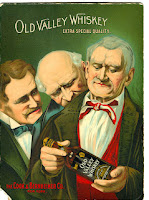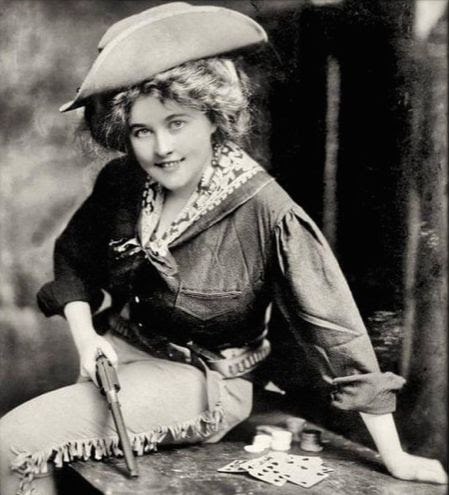In 1864, as the American Civil War was winding down, an immigrant wholesale liquor dealer named Louis Livingston opened a wholesale liquor house and grocery in San Francisco at 221 California Street with a business strategy, while not unique, was unusual. He imported top grade whiskeys from major Eastern distillers, paying the transcontinental shipping costs and advertising vigorously his premium liquor.
After forming a partnership with three San Francisco locals in 1876, Livingston abruptly sold out to them several years later and returned to his native Germany. The new owners, Issac Levy, Abram P. Wiiiams, and Joseph May wisely kept Livingston’s name on the door and maintained his business strategy. The founder, however, apparently never returned.
With May as president, the three inheritors found that whiskey men beyond the Rocky Mountains were more than eager to help Livingston & Co. import their brands for the West Coast, claiming to be sole West Coast distributors and sharing bottle space with their name. A key supplier was the W.A. Gaines Co. of Frankfort, Kentucky and its Hermitage Distllery, named for Andrew Jackson’s home place.
 Bradley quickly saw to the incorporation of W. A. Gaines with all assets and trademarks officially under company ownership. He also determined that those liquor houses selling Old Crow bourbon should not be self-selected chaos, but chosen to represent the brand targeting specific markets. In New York City Bradley wisely anointed the H.B. Kirk Company. In San Francisco he selected Livingston & Co. The result was the exclusive right to sell Gaines whiskey on the West Coast and to advertise Livingston & Co. as its sole agent. The company name appeared prominently on every quart.
Bradley quickly saw to the incorporation of W. A. Gaines with all assets and trademarks officially under company ownership. He also determined that those liquor houses selling Old Crow bourbon should not be self-selected chaos, but chosen to represent the brand targeting specific markets. In New York City Bradley wisely anointed the H.B. Kirk Company. In San Francisco he selected Livingston & Co. The result was the exclusive right to sell Gaines whiskey on the West Coast and to advertise Livingston & Co. as its sole agent. The company name appeared prominently on every quart.

Cook & Bernheimer also reached out across America to San Francisco and arranged collaboration with Livingston& Co. Among the New York brands chosen was AAA/Old Valley Whiskey. The label announced it this way: "WE HAVE APPOINTED MESSRS. LIVINGSTON & CO. 220 & 222 CALIFORNIA ST. SAN FRANCISCO SOLE AGENTS FOR THE PACIFIC COAST, AND HAVE GIVEN THEM EXCLUSIVE CONTROL OF THIS MAKE OF BOURBON. COOK & BERNHEIMER NEW YORK”. Shown below are Livingston & Co. “Old Valley” bottles, left a flask and right a labeled quart.
A third distillery providing whiskey to Livingston & Co., although apparently not exclusively in the San Francisco area, was the Sunny Brook Distillery, owned by the Rosenfield family of Chicago. By 1904, Sunny Brook had declared itself to be the largest producer of whiskey in the world — and may have been right. Its distilling capacity had been expanded to 20,000 gallons daily and warehouses held 10 million gallons of aging liquor. After several business moves in Chicago, the Rosenfields established their main offices at 174 Randolph Street and opened a New York City office. For a time they also had a Philadelphia branch at the city’s Bourse. The Rosenfields were also picking up awards. At the St. Louis Exposition and World’s Fair their Sunny Brook Whiskey was given both a gold medal and grand prize.
 The image here implies that Livingston & Co. also had an outlet in Covington, Kentucky, just across the Ohio River from the important whiskey hub of Cincinnati. The reference is a sham. The location given is “SE Corner Front and Scott Streets.” I have found at least other 15 other companies at the same address, many of them purporting to be distillers. This was a common practice in the liquor industry. A legitimate distiller would lease a small amount of space to a whiskey dealer to store whatever he wished and then allow him to claim a Kentucky distilling address for his company. Begun in 1900 the “Covington sham” was phased out after 1906.
The image here implies that Livingston & Co. also had an outlet in Covington, Kentucky, just across the Ohio River from the important whiskey hub of Cincinnati. The reference is a sham. The location given is “SE Corner Front and Scott Streets.” I have found at least other 15 other companies at the same address, many of them purporting to be distillers. This was a common practice in the liquor industry. A legitimate distiller would lease a small amount of space to a whiskey dealer to store whatever he wished and then allow him to claim a Kentucky distilling address for his company. Begun in 1900 the “Covington sham” was phased out after 1906.
 Throughout the growth of Livingston & Co, Joseph May guided its fortunes, making agreements with Eastern whiskey sources that brought nationally known brands to the West Coast. He also promoted an exclusive company brand called “Pride of Kentucky” shown here in amber quarts. Needing more space for his growing liquor business, May moved to a four-story building at 206-208 Davis Street that provided substantially more space for expansion. The structure is shown above on an 1890 letterhead.
Throughout the growth of Livingston & Co, Joseph May guided its fortunes, making agreements with Eastern whiskey sources that brought nationally known brands to the West Coast. He also promoted an exclusive company brand called “Pride of Kentucky” shown here in amber quarts. Needing more space for his growing liquor business, May moved to a four-story building at 206-208 Davis Street that provided substantially more space for expansion. The structure is shown above on an 1890 letterhead.
Unfortunately, the building would be in the path of the Great San Francisco fire and destroyed. May and his colleages had sufficient resources to surmount the monetary losses from the fire, moving the company initially to 3443-3445 17th Street. The final move of the liquor house was in 1911 to 639 Howard Street. In the interim, Joseph May died, replaced, it is said, by his wife as chief operating officer.
Livingston & Co doors closed for good in 1917, likely anticipating the imposition of National Prohibition. The liquor house Louis Livingston had founded — and left behind — had survived for more than a half century. During that period a major development had taken place, linking Eastern whiskey producers more closely with Western liquor dealers. Despite the founder’s departure to Europe, Livingston & Co. proved to be one of the major beneficiaries.
Note: The story of Livingston & Co. was developed from a number of sources. Among them were prior posts on this website: Edson Bradley, September 19, 1011; Cook & Bernheimer, November 7, 2016, and the Rosenfelds, September 4, 2013.
Special Notice: Given my age (90) and infirmities, I have suspended adding additional posts to this blog, this being #1201 in the series. Instead I will be reviewing previous posts for accuracy, spelling, and typos and responding as necessary to comments. Thanks to all my loyal bloggers for their continued patronage.
















































